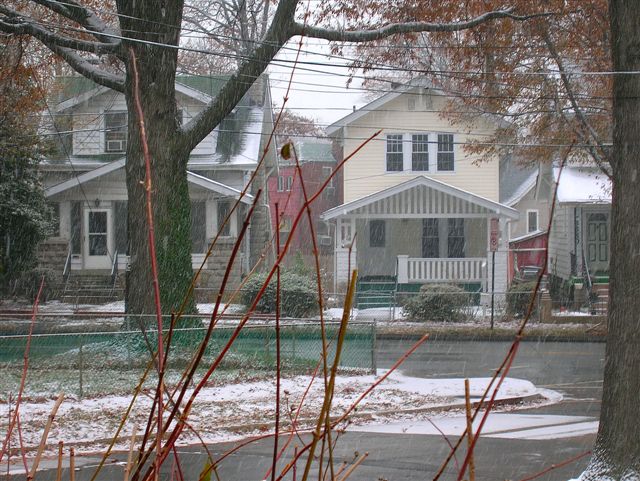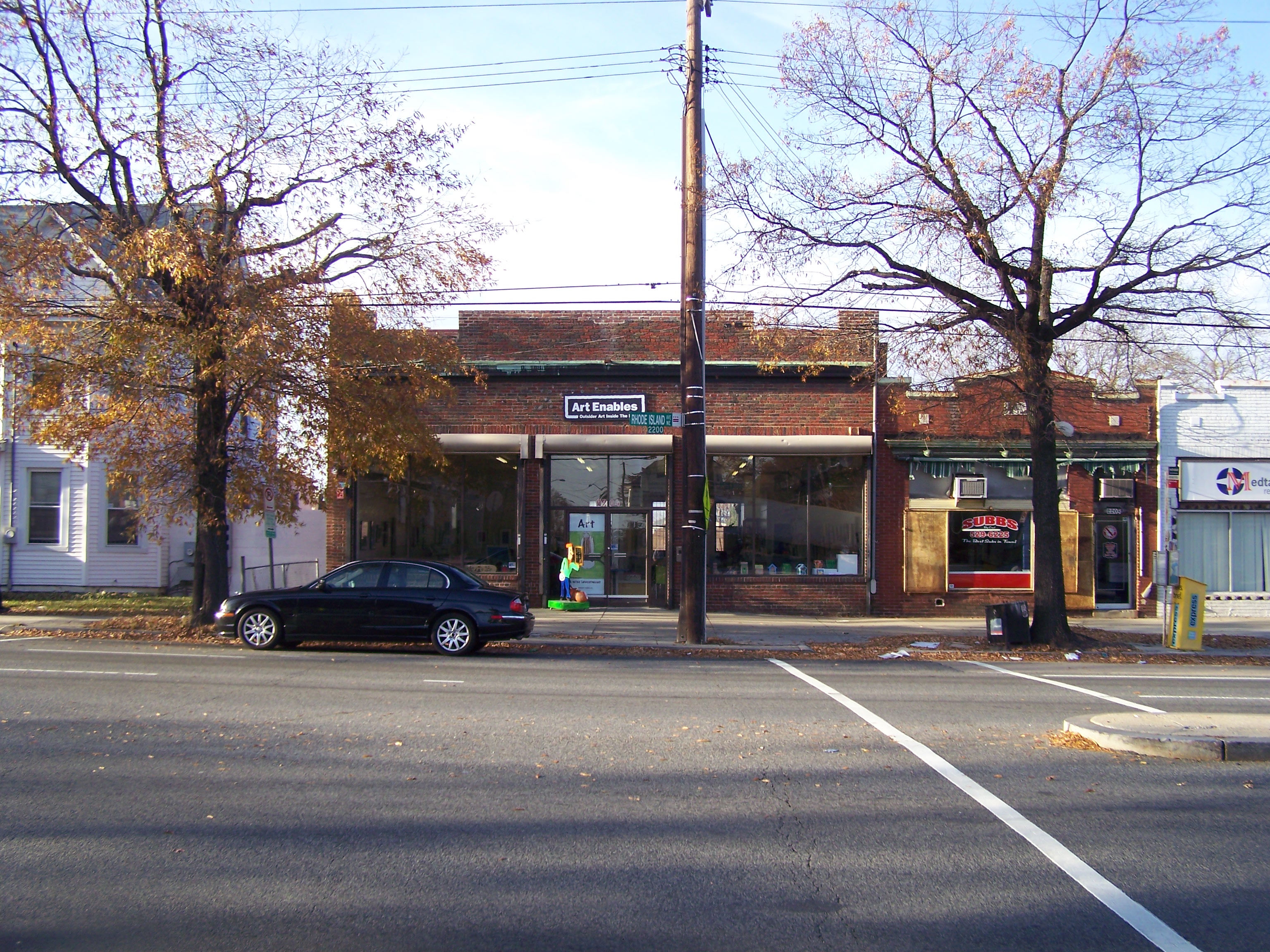Woodridge, a hot neighborhood nationally?
 According to the Redfin online and real estate brokerage, the 2015 list of the hottest national neighborhoods includes a surprise, a DC neighborhood, Woodridge (pictured at left, Flickr photo by Jaime Fearer).
According to the Redfin online and real estate brokerage, the 2015 list of the hottest national neighborhoods includes a surprise, a DC neighborhood, Woodridge (pictured at left, Flickr photo by Jaime Fearer).Here's the list:
1) El Cerrito, San Diego
2) Dickinson Narrows, Philadelphia
3) East Atlanta, Atlanta
4) Little Neck, Queens, N.Y.
5) Bohemia, Long Island, N.Y.
6) Curtis Park, Sacramento
7) Andersonville, Chicago
8) Woodridge, Seattle
9) Crocker, San Francisco
10) Woodridge, Washington, D.C.
 It's hard for me seeing Woodridge as one of the nation's hottest neighborhoods. I do understand the price appeal. Here's Redfin's criteria according to the Los Angeles Times:
It's hard for me seeing Woodridge as one of the nation's hottest neighborhoods. I do understand the price appeal. Here's Redfin's criteria according to the Los Angeles Times:The website says it compiles the list based on the number of page views, favorites and Redfin “Hot Homes” in a neighborhood, after adjusting for sizewhich seem somewhat spurious.
From the standpoint of price vs. value, you get more house and more yard in Woodridge, and compared to living in Prince George's County, DC houses are more likely to hold their value.
According to the article Redfin claims that people are again seeking farther out locations
“Many homebuyers have recoiled from the dramatic increase in house prices in urban centers posted over the past three years,” Redfin Chief Economist Nela Richardson said in a statement. “They are now searching for more affordable places farther out.”Woodridge has decent and eclectic housing stock, and it's in DC.
Using the Live Baltimore concept of a "one over neighborhood" and buying close to the neighborhood that you want, but is too expensive, Woodridge is "one over" from Brookland, which is definitely a hot neighborhood with escalating prices.
Most in city neighborhoods are attractive because of walkability and rail transit. But from the standpoint of the kinds of characteristics that attract people to in-city neighborhoods, walkability, access to a Metrorail station in particular, and having a neighborhood commercial district including restaurants you can walk to.
Woodridge comes up short--it's not a walkable neighborhood, it's a driving neighborhood-- making it less likely to achieve the same level of hotness and long term value as its one over neighbor, Brookland, or closer in neighborhoods that are eminently walkable.
Woodridge is automobile-centric, although a number of bus lines serve the area, the schools are just ok, and it's roughly 1.0 to 2.0 miles to either the Brookland or Rhode Island Metro Stations.
Using Walkscore, 2100 Otis St. NE comes out at a 65, somewhat walkable, with lower scores for transit and bikeability. By contrast much more of Brookland rates higher, and core neighborhoods have scores in the 90s.
 There is commercial district of sorts on Rhode Island Avenue NE, with some decent buildings, but it's pretty disjoint, without many particularly noteworthy businesses, other than Rita's ice cream and the Art Enables Gallery.
There is commercial district of sorts on Rhode Island Avenue NE, with some decent buildings, but it's pretty disjoint, without many particularly noteworthy businesses, other than Rita's ice cream and the Art Enables Gallery. The north side of the street has particularly wide sidewalks that would serve as great restaurant patios.
Zeke's, a Baltimore coffee outfit, recently opened up a DC shop at 2300 RI Avenue NE.
But there is a Main Street commercial district revitalization initiative for the corridor and maybe that can help turn things around for the commercial district.
 Besides a coffee shop, a great "community restaurant" is a key necessity to help reposition the commercial district.
Besides a coffee shop, a great "community restaurant" is a key necessity to help reposition the commercial district. But it's tough in DC to maintain the success of a commercial district that relies on the automobile (see "“Dying” Georgia Avenue Block Bodes Ill for the Neighborhood," Washington City Paper) rather than pedestrians.
Labels: commercial district revitalization planning, neighborhood revitalization, real estate market, restaurants



4 Comments:
maybe I got the geography wrong here, but wouldn't the proposal for an infill MARC station benefit this area.
I think you're right about the lack of desirability of current retail district, but in a way that is insignificant. Woodridge is a neighborhood for folks who want large lots and likely at least some driving. Therefore they can easily utilize all the nearby Brookland retail amenities. I think it fits into the 'neighborhood next door' concept quite nicely
1. charlie, the proposal was more about serving the New York Avenue corridor. But, using the Camden line, you could provide service in this area too. An old schedule I have does denote a Langdon station, although even then it wasn't showing scheduled service. I think it was from the late 1950s are early 1960s.
2. h st ll -- you raise a good point. I don't want to call it a "counterfactual" because it is an equally valid interpretation of the demand.
While I want to believe the strength of the city is in walkability, the reality is that much of the outer city offers in-city convenience but for people who drive, want to drive, etc., and it isn't about walkability.
... what I call the difference between the outer city and the core or inner city.
Woodridge would be an outer city neighborhood definitely, even as the core of Brookland is more walkable, that's a relatively small section of the greater neighborhood.
h st ll -- ... but, the thing is, I think that the same points I made about PG County and the types of neighborhoods that retain value in the face of changing macroeconomic circumstances are relevant to the outer city neighborhoods, especially on the outskirts of the city.
e.g., we like to go to Parkway Deli, which is on Grubb Road, a couple blocks from the DC-MoCo line. You have to park a car2go in a particular way in order to park in the home zone, and we park on Sudbury. One of the houses sold and I looked it up and while the price was high ($779,000) it probably wasn't as high as it would have been were it located in closer in neighborhoods.
Post a Comment
<< Home